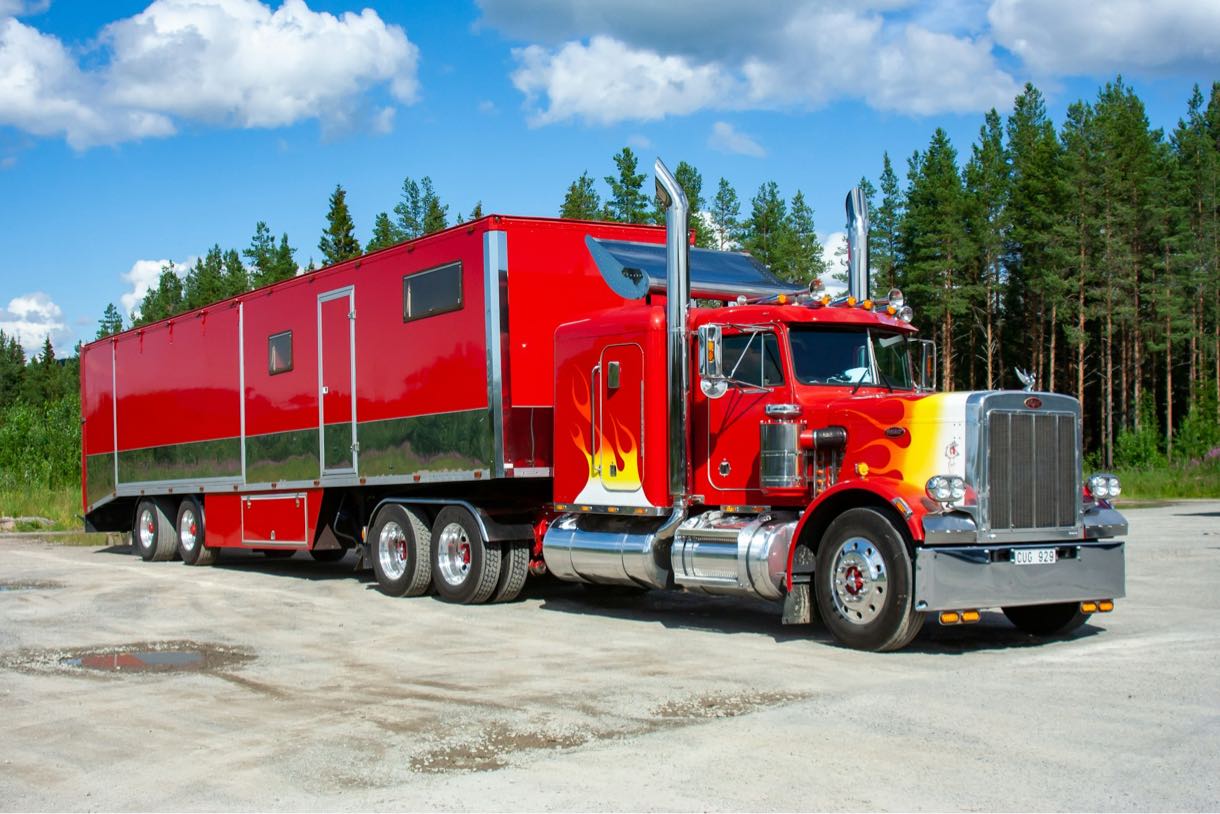Transporting a vehicle across the vast North American landscape can be an intimidating undertaking. Comprehending the finer points of cross-country auto transportation is essential, regardless of whether you’re moving to a new state, buying or selling a vehicle, or shipping a car to a loved one. The distance is not the only difficulty; you also need to navigate the nuances of transportation logistics, laws, and making sure your car is secure the entire way. This detailed guide explores the unique challenges of transporting an automobile across the United States, guaranteeing that your car’s voyage is as seamless as the roads it drives on. We’ll go over all the facets of automobile shipping, from figuring out the best shipping option to comprehending the associated expenses.
We address your questions and concerns regarding this process in this detailed overview. A automobile is more than simply a means of transportation for many people; it’s also a priceless possession full with memories and meaning. It might be worrisome to consider giving it to a shipping company for a cross-country trip. Therefore, our goal is to provide you the information and self-assurance you need to make sound decisions. You’ll have a comprehensive understanding of the procedures involved in cross-country auto shipping by the end of this text, which is designed to accommodate a range of requirements and circumstances. This guide is your friend in guaranteeing a hassle-free and safe transportation experience for your prized automobile, regardless of whether this is your first time shipping a car or you’re looking to brush up on your knowledge.

Weighing your alternatives is necessary when selecting the best car transportation method for the huge territory of the United States. Each option has pros and cons of its own. So that you can make an educated choice, let’s take a closer look at these possibilities.
Driving the Vehicle Yourself Having the ability to drive at your own speed and seeing the nation may make driving a car across the country an exciting experience. Nevertheless, there is a major time commitment and probable expenses associated with this approach. Fuel, food, and accommodation expenses go up quickly, and you shouldn’t undervalue your car’s wear and tear. In addition to exhaustion and possible safety risks, long hours behind the wheel can also be dangerous, particularly for inexperienced drivers.
Towing Behind a Rental Truck If you already have a rented truck for moving household goods, utilizing it to tow your car makes sense. Cost-effectiveness can be achieved with this approach, especially for shorter interstate traveling. You can attach a vehicle trailer or a tow dolly to most rental trucks since they have tow hitches. But you have to feel at ease operating a bigger vehicle with additional weight being dragged. This alternative might not be appropriate for all vehicle types, especially larger or heavier cars, and it does require a basic understanding of safe towing procedures.
Hiring a Professional Auto Transport Company Hiring a reputable car shipping company is the most common and convenient choice. These businesses offer a wide variety of services catered to many different needs and budgets, with a focus on moving autos throughout the nation.
- Open Carrier Transport: Open carrier transport is the most popular and cost-effective option. Your automobile will be hauled on an open trailer, usually with room for many vehicles. This approach is economical as well as suitable for the majority of standard vehicles. It does, however, expose the car to the outdoors and the weather, which may not be the best option for brand new, expensive, antique, or extremely delicate cars.
- Enclosed Carrier Transport: Enclosed carrier transport is the best choice for individuals who want to provide the vehicle the best possible protection. Enclosed carriers are ideal for new, luxury, vintage, or sentimental autos because they offer an additional layer of security and protection from the weather. Though more expensive, this option may be well worth the money for some cars because of the added security and peace of mind it provides.
All in all, there are certain advantages and things to keep in mind while choosing a vehicle transportation method for cross country shipping. A number of things will influence your decision, including your financial situation, your preference for a certain level of security for your car while it is being transported, and your comfort level with long-distance driving or towing. By carefully weighing your alternatives, you can make the most appropriate choice for your unique set of requirements and circumstances.

Choosing a trustworthy auto shipping company is essential to guaranteeing a hassle-free automobile transportation experience. To ensure the security and dependability of the service, a number of important considerations need to be made.
Competitive Pricing: Although price is frequently a major factor, it should be weighed against the caliber of the service. Conduct a pricing comparison between different companies. Prices that look too good to be true should be avoided as they might be an indication of subpar work or additional costs. A fair balance between cost and quality is often indicated by a reasonable pricing that is in line with industry norms.
Customer Service Quality: One cannot emphasize how important providing exceptional customer service is. Conversations with customer support agents reveal information on the company’s general vehicle management strategy. Search for businesses who can respond to your questions and offer thorough, understandable information. A business that prioritizes the satisfaction of clients will be open and honest about its procedures and guidelines, giving customers confidence throughout the shipping process.
Company’s Track Record: Examine the history and reputation of the business in the car transport industry. A business that has a solid track record of growth and success is more likely to offer dependable and effective service. For ratings and client testimonials, check out independent review websites, discussion boards, and the Better Business Bureau. Reliability and skill of a corporation may be inferred from high ratings and consistent favorable comments.
Insurance Offerings: An essential component of car shipping is insurance. Find out what is covered by the company’s policy (the auto carriers’ insurance policy is what you need to check) and confirm the different types of insurance coverage that are available. Make sure the coverage is sufficient to safeguard your car from any potential damage while it is being transported and that it is comprehensive. Only the best auto transport brokers will offer thorough explanations of coverage limitations and restrictions, as well as be open and honest about the carrier’s insurance policies. Some of the best car shipping brokers in the business also offer additional insurance options, such as Othex Protection or other Gap Insurance Policies, for the most complete insurance coverage for car shipping.
Recognized Industry Leaders: It’s critical to choose a car shipping company from among those that are highly regarded and well-known in the field. Among them, Sherpa Auto Transport, American Auto Shipping, Ship A Car, Inc. (SAC), and Ship A Car Direct are particularly noteworthy. For instance, Ship A Car, Inc. has established itself as a leader not only by consistently providing high-quality services and satisfying customers, but also by providing a wide range of services and being devoted to providing outstanding customer service. These businesses are the best options for transporting cars across the country because they have proven they can offer dependable, effective, and customer-focused services. Yet SAC presents itself as a better choice, giving clients unmatched value and peace of mind, thanks to a special combination of aggressive pricing, first-rate customer support, and a solid track record.
To sum up, choosing the best vehicle shipping provider necessitates a thorough assessment of factors including cost, customer support, track record, and insurance coverage. Choose a service provider who exhibits a good mix of affordable prices, first-rate customer support, a solid track record, and extensive insurance possibilities. An easy as well as secure car shipping experience may be further ensured by selecting a reputable industry leader.

Car shipping preparation is more than simply a phase in the process; it’s an essential part that guarantees the effectiveness and safety of your vehicle’s transportation. Every move you make gets your car ready for a safe and trouble-free ride.
Ensuring Drivability: Make sure that the car is in a driveable condition first and foremost. This involves ensuring that the brakes work properly, the headlights and taillights are in good working condition, and the engine starts without any problems. This is an important stage since it impacts not only the procedure of loading and unloading, but also the general safety of the shipment. You need to notify your transport coordinator if the automobile is not working so they can make sure the auto carrier has the necessary equipment to transport a non-working vehicle.
Fluid Check and Top Off: Check the levels of all the fluids in the car, such as the coolant, power steering, brake, engine oil, and windshield washer fluid. Replace any low fluids with more. By taking this precaution, any unforeseen mechanical problems that can develop during the transit because of low fluid levels are avoided.
Emergency Brake Assessment: For transport, a working emergency brake is a must. This safety element makes sure that regardless of the movement or terrain, the vehicle stays steady on the carrier. Make sure the emergency brake is working properly by testing it and getting it fixed if needed.
Thorough Cleaning: There is more to washing the car than simply looks involved. It is simpler to spot any new dents, scratches, or other damage that may have happened during transportation when the outside is clean.
Removal of Personal Items and Accessories: Take everything personal out of the interior of the vehicle. This includes loose objects that could move around while being transported and endanger the interior of the car. Remove any exterior attachments that may be susceptible to damage or cause problems during shipping, such as bike racks, antennae, and custom spoilers.
Gas Tank Consideration: Fill up the gas tank no more than 25% of the way. Although sometimes missed, this step is essential for lowering the vehicle’s weight, which might affect shipping costs. The transport carrier will travel farther on less fuel when the vehicle itself is lighter.
Every one of these actions is essential to getting the car ready for transport. They help the transport company deliver a seamless and incident-free service in addition to protecting the vehicle itself. By following these safety measures, you can make sure that the vehicle is prepared for its cross-country trip and will reach its destination undamaged.

One of the most important steps in the process is navigating the financial elements of shipping a car across the United States. There is no set price for shipping a car; instead, it varies depending on a number of circumstances. By being aware of these factors, you may make prudent financial choices and select the most appropriate shipping solution.
Distance: The distance that the car must go is the main element influencing the price. Typically, the price is determined per mile, with an average of $0.84 to $2.05. Long-haul travel is surprisingly economical even if the overall cost goes up with greater distances since the per-mile charge frequently goes down.
Vehicle Type: The make, model, and size of your car also affect how much it costs. Bigger cars, such as SUVs and trucks, cost more because they weigh more and occupy more room. On the other hand, smaller cars are usually less expensive to transport as they are lighter and take up less room.
Time of Year: Seasonal variations have a big influence on auto transport prices. Peak moving seasons, such as the summer and early January, can see higher prices because of greater demand. On the other hand, shipping at off-peak times may result in cheaper prices.
Fuel Prices: One of the biggest costs associated with transportation is fuel. Shipping costs grow in tandem with fuel prices because carriers must recoup their higher operating expenses. The final shipping quote may be affected by this variable’s significant fluctuations over time.
Carrier Type: The decision between an enclosed carrier and open carrier transport impacts the price. The more commonly used open carriers provide a more economical choice. Your vehicle is hauled outside with other vehicles. Enclosed transport is frequently chosen for luxury or vintage cars because it offers protection from the elements and road debris. However, it comes at a greater cost.
Geographical Location: The pricing is affected by the precise locations of pickup and delivery. Because it takes longer to go to and from remote or less accessible locations, shipping can be more expensive to and from these locations.
Service Speed: Be ready to pay more for fast shipment if you need it. Fast-tracked deliveries are more expensive since they frequently call for specific preparations and may interfere with carriers’ usual schedules.
By understanding these variables, you can make informed decisions and find the most cost-effective and efficient method to ship your car across the country. Note that although price is important, you should weigh it against the service’s dependability and safety.

Car shipping cross-country is an intricate process that calls for close attention to detail and a clear sense of what to anticipate. Although the average timeframe is five to seven days, there are a number of variables that might affect how long it takes. Let’s examine the important phases and components of the shipping procedure:
Timeline and Variability: Cross-country auto transportation typically takes between seven and ten days. That being said, nothing is finalized. This time frame may be extended by outside factors like bad weather, unforeseen traffic jams, or even carrier-specific problems. Remaining adaptable and patient is crucial since, although annoying, these delays are frequently out of the shipping company’s control.
Choosing a Shipping Company: The next crucial step after deciding to ship a car is choosing a reliable shipping provider. The tone for the entire process is set by this decision. Your car will be transported by an auto carrier, that you have approved of, and the shipping company then assigns to the transport. Your transport coordinator will provide you all the information you need, such as the approximate dates of pickup and delivery, their contact details, and any relevant tracking options.
Vehicle Pickup: The driver will show up to put the car onto the carrier on the day of the appointment for pickup. This is an important time to provide any particular instructions or vehicle-related concerns. To document the state of the vehicle, the driver will perform a brief inspection. This ensures that any pre-existing damage is recorded, safeguarding you from being held responsible for any damage that was already there.
In Transit: The shipping provider may give you information on the whereabouts and anticipated arrival time of the car while it is en route. Some businesses provide real-time GPS monitoring, which lets you keep an eye on the whereabouts of your car and provides peace of mind. It’s critical that you be reachable throughout this time in case the driver or company wants to get in touch with you regarding any updates or scheduling modifications.
Delivery and Inspection: When you get to your location, you should definitely check your car carefully for any possible damage that could have happened during the journey. The level of detail in this inspection should be maximized. The bill of lading is a legal document that documents the state of your car at both pickup and delivery. Take note of any dents, scratches, or inconsistencies. For any insurance claims you might need to file, this step is essential.
Finalizing the Process: If everything checks out after the inspection, you can sign the bill of lading to confirm that your car has arrived. This signifies the end of the shipping process. Make sure you have all the required paperwork and get in touch with the shipping company immediately in case there are any disagreements or damage claims.
You can better prepare for the trip the car will take if you are aware of each of these phases. Remember that the secret to a successful and seamless shipping experience is contact with the shipping company of your choice.

It takes strategy and well-informed decision-making to ship a car across the country at a reasonable cost and with the least amount of inconvenience. Here, we go into further detail on how to make sure that the trip in your car is both economical and suitable for your needs.
Obtain Multiple Quotes: Obtain quotations from a few vehicle transport companies beforehand. Using a comparison method allows you to evaluate the breadth of services provided in addition to providing an overview of price. Keep in mind that when it comes to service quality, the least expensive choice may not necessarily be the best. Along with the price, take into account variables like customer feedback, carrier type, and travel time.
Choose Economical Transport Options:
- Open Transport: This is usually the one that fits the budget the best. Although it is less expensive, shipping a car in an open-air carrier exposes it to the elements and the state of the roads.
- Terminal-to-Terminal Shipping: This is a less expensive option than door-to-door service as it entails dropping off and picking up the car at designated places. But you’ll need to put in more work and cooperation.
Avoid Peak Shipping Seasons: The summer and early winter are two seasons when rates tend to rise because of higher demand. You may save a lot of money by shipping your automobile during off-peak seasons. Consider the seasonal variations in vehicle shipping and plan your shipment appropriately.
Book in Advance: You can get greater deals if you reserve early. It also makes scheduling flexibility and a larger range of carrier alternatives possible. Making reservations at the last minute or requiring expedited shipment might result in increased expenses, which can be avoided by preparing ahead.
Be Flexible with Shipping Dates: You may be able to negotiate a cheaper price if you can afford to be accommodating with your delivery dates. In order to load their carriers on particular routes, transportation corporations may occasionally offer reduced prices. Both you and the carrier may benefit from this flexibility.
Seek Out Discounts: Please don’t be afraid to ask about potential savings. A lot of shipping companies give discounts to senior citizens, students, military personnel, and even early bookings. The total cost may vary significantly as a result of these savings.
By including these tactics into your strategy for car shipping, you can ensure a convenient and dependable transport experience at a significantly lower cost. By being aware of and taking advantage of these factors, you can easily arrange for your car to have a hassle-free, reasonably priced cross-country trip.

Streamlining Your Cross-Country Car Shipping Experience If you take the proper strategy, transporting a car across the continent may be an easy going experience. A safe and affordable transit may be ensured by carefully preparing your car, knowing your alternatives, and choosing a reliable shipping company. Every choice you make, including the time of your shipment and the manner of transportation, has a significant impact on the final cost and experience. As you wrap up this guide, keep in mind that choosing the correct services and matching the requirements you have with them are the keys to a successful auto shipping experience.
Discover the Excellence of Ship A Car, Inc. When it comes to cross-country car shipping, Ship A Car, Inc. stands out as the best option because it provides a variety of services across the US. Their dedication to quality can be seen in all facets of their business, from their careful attention to the needs of customers to their extensive transport options that accommodate a wide range of vehicle types, including automobiles, motorcycles, and specialized vehicles. Customers may anticipate a wide range of services from Ship A Car, Inc., including door-to-door delivery, both covered and open transport, and expedited shipment for those last-minute transfers. Because of its nationwide reach, Ship A Car, Inc. will ensure a smooth and stress-free car shipping journey no matter where you are or where you’re going.
Why Ship A Car, Inc. Should Be Your Go-To Choice When it comes to getting your car shipped across the country, choosing Ship A Car, Inc. is a decision that brings peace of mind and satisfaction. Their significant expertise in countrywide transport, together with their steadfast focus to offering top-notch service, makes them the perfect partner for your automobile shipping needs. Ship A Car, Inc. is prepared to handle everything with expertise and care, whether you’re moving, purchasing or selling a car, or giving a special ride to a loved one. Don’t take our word for it, but instead call them at (866) 821-4555 for a free, no-obligation estimate, or use their online vehicle transport quote form to learn more about their services. Discover the difference when you choose Ship A Car, Inc. to handle the skilled handling of your car’s cross-country trip.
Q: What is the average cost to ship a car across the U.S.?
A: The average cost per mile can range anywhere from $0.84 to $2.05, depending on factors such as the distance traveled, the kind of vehicle, and the season.
Q: How long does it typically take to ship a car across the country?
A: It takes anywhere from seven to ten days to ship a car across the United States, although this time frame might change depending on the weather, the amount of traffic, and other variables.
Q: Is it better to use open or enclosed transport for shipping a car?
A: Although open transit is more cost-effective, it leaves the vehicle vulnerable to the weather. Enclosed transport provides a higher level of protection at a higher expense, making it more suited for classic or expensive cars.




